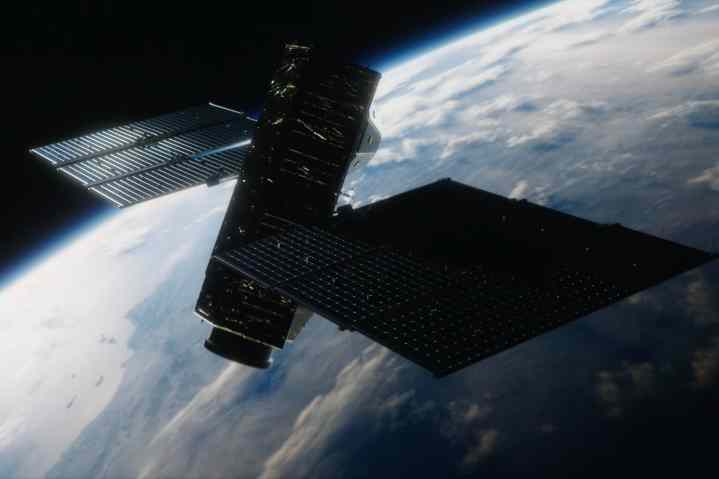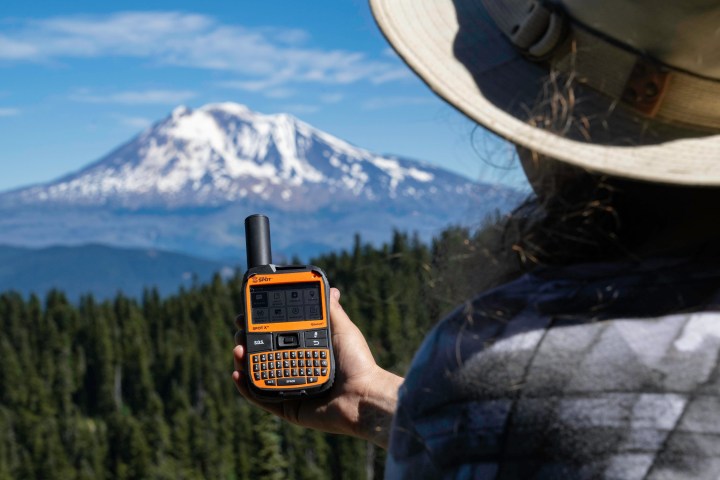Apple is touting the emergency satellite communications capabilities of its new iPhone 14 lineup, but wilderness rescue experts say the new feature might get some users into trouble.
The new iPhones allow you to send short messages from remote locations where cellular service isn’t available. Apple says the satellite function is among the “vital new safety features we hope you’ll never need.” However, experts say the feature could also give adventurers a false sense of security.
“There will always be a group of novice or untrained outdoor recreation participants that will misplace their trust in the technology as a safety net that they really don’t understand,” Christopher Boyer, the executive director of the National Association for Search and Rescue, told Digital Trends in an interview. “There will also be others that abuse the technology out of ignorance, entitlement, or negative intent.”
Lost and found?

Apple says that the Emergency SOS feature, coming in November, can help you connect with emergency services outside the range of cellular and Wi-Fi coverage. The company warns that under ideal conditions, a message might take 15 seconds to send, while it could take over a minute to send under trees with light or medium foliage. If you’re under heavy vegetation or surrounded by other obstructions, it might not be possible to connect to a satellite at all.
Jones pointed out that satellites operate on line-of-sight connections. If you are in a forest, cave, canyon, or anywhere in northern Canada or Alaska, you may not be able to make contact with a satellite.
“Read and understand the limitations of satellite communications, or the satellite feature is useless,” Boyer said. “Don’t rely fully on satellite service; make sure to have multiple, redundant ways of communicating or receiving alerts, such as two-way radios.”
Bruce Jones, an emergency preparedness expert for Midland Radio, which makes two-way communications and weather/emergency alert technologies, warned in an interview with Digital Trends that “cell phone users will need to understand that this feature will not be effective 100% of the time. Use responsibly is my advice.”
Apple did not respond to a request by Digital Trends for comment.
Not a free pass for risky behavior

First responders frequently deal with emergency calls from people who ignored posted or broadcasted warnings, got themselves in trouble, and called for rescue, Jones said. Some cities and counties will charge you for expensive helicopter costs if you need rescue due to your own choices. “Satellite SOS is not a free pass for risky behavior,” he added.
The debate over whether more technology leads to riskier behavior goes back decades. Mountaineers have argued that devices like satellite rescue beacons, which can alert and guide rescuers to stricken adventurers, are a crutch that can lead inexperienced hikers into situations for which they are not prepared.
There’s little doubt that satellite devices do save lives. The National Oceanic and Atmospheric Administration (NOAA0 said that since its start in 1982, its satellites had been credited with supporting more than 48,000 rescues worldwide.
In one recent episode, Alaska Air National Guardsmen rescued an injured hiker about 30 miles northeast of Anchorage. The hiker messaged for help using a satellite communication device. “This rescue proved once again the utility of a two-way satellite communication device when going into the Alaska wilderness where there is no standard cell service,” Alaska Air National Guard Senior Master Sgt. Jeffrey Hamilton said in a news release.
Satellite lifesavers

Many wilderness experts say that the iPhone 14’s satellite capabilities can be a useful tool if used with care. Ryan B. Carlson, the executive director of the Wilderness Education Association, said that the possibility that satellite communications might lead to overconfidence isn’t a reason not to buy the new iPhone.
“The answer is to better equip and educate users for best safety practices,” he said in an interview. “To increase competencies in the recreation pursuits, we need to increase access to training and education to make good decisions in the backcountry. A day of education and training is incredibly affordable compared to the cost of a rescue, especially in remote terrain.”
Jones agreed, saying that “everyone needs multiple, redundant ways to receive and transmit emergency information. Incoming warnings for severe weather and outgoing calls for help have the potential to save lives. Satellite is another tool to put in your preparedness kit alongside two-way radios.”
Not all satellite communication is created equally

Harding Bush, a former Navy SEAL and manager of security operations for Global Rescue (a provider of medical, security, evacuation, and travel risk management services), said in an interview that backcountry enthusiasts should not replace their other satellite messaging devices with an iPhone 14. He pointed out that a satellite messaging device allows you to send SMS messages and e-mails to anyone — not just the local municipal 911 emergency response service.
“Satellite messaging devices usually have a tracking feature, where the user can send a message to specific recipients, and the recipient can follow the movement and location of the sender with a map graphic, including the location, geographic coordinates, the direction of travel, and the traveling speed of the sender,” he added.
But Bush said that having both cellular and satellite connectivity on a single device is a huge technological breakthrough. Users will be safer as they can always contact emergency services.
A huge step forward — to an extent

“As the satellite functionality of smartphones expands, there could be a time when they eclipse the capabilities and features of satellite messaging and tracking devices and satellite phones,” Bush said. “But until then, devices with satellite messaging and tracking capabilities should be the standard communication device for those who venture beyond the range of cell phone connectivity.”
Boyer warned that you shouldn’t head into the backcountry with the iPhone 14 and hope for rescue in case of emergency. You should be trained to use a map and compass and carry them with you. Also, let someone know where you are going and when you will be back.
“They should have carried the essentials required by that environment to be safe and survive,” he added. “They should have gotten training for first aid and maintained all the perishable outdoor skills they would need. Once lost, they should stay where they are and attempt to signal for help.”


